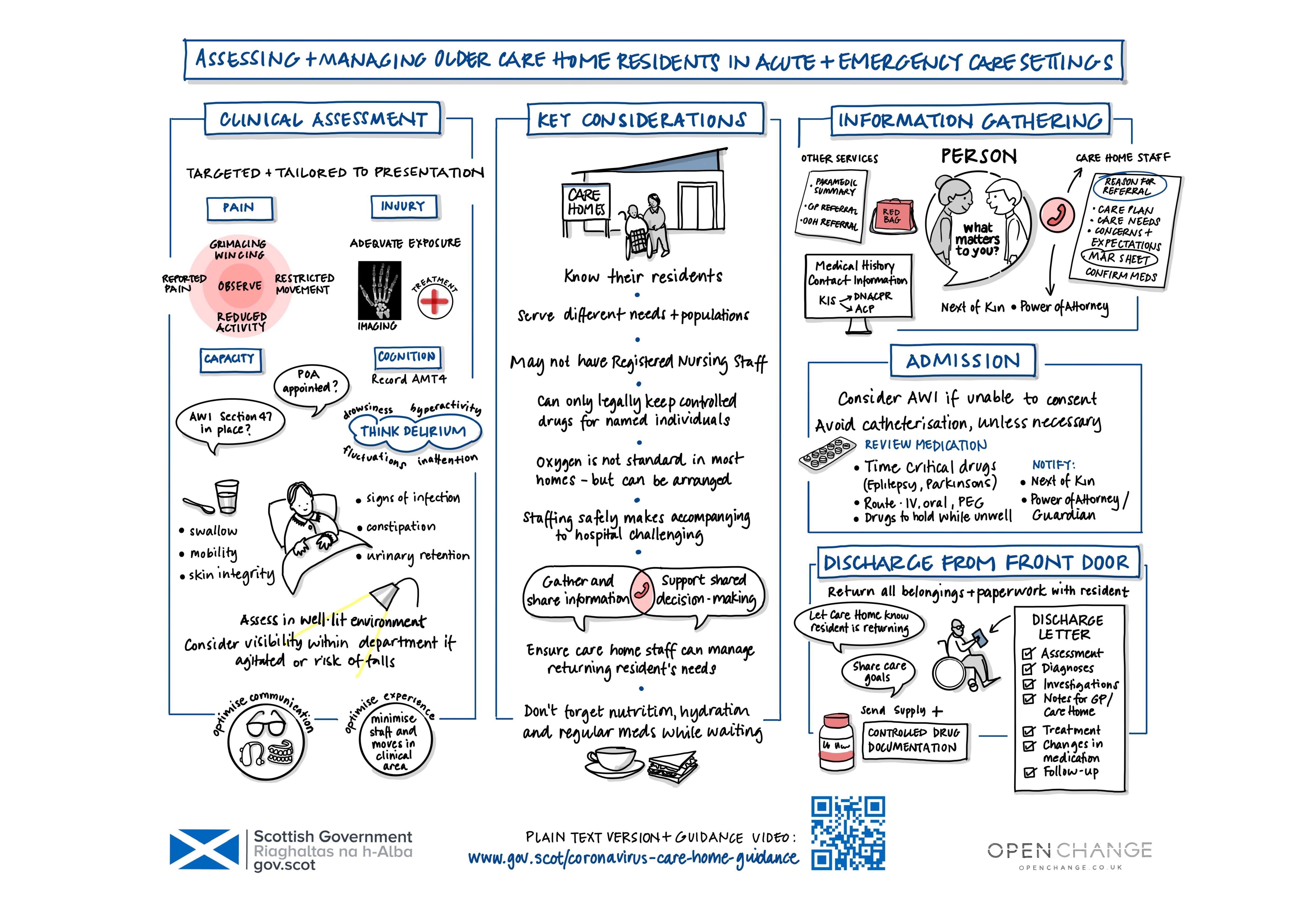Dr Jenni Burton is a clinical lecturer and specialist registrar in geriatric medicine in Glasgow. She tweets @JenniKBurton
During the pandemic, it has been my great privilege to contribute to the Scottish Government’s Clinical and Professional Advisory Group on Care Homes (CPAG). CPAG was convened to respond to the challenges faced by the sector as a result of COVID-19 and our weekly multi-professional meetings have been dynamic and solution-focused. Working as part of the group has provided a forum to raise more long-standing issues which impact on those living in care homes. In my role as a medical registrar, a key focus for me is promoting the comprehensive assessment and management of older adult care home residents when they present to Acute Receiving Units and Emergency Departments.
Due to high levels of complex co-morbidity, frailty and dementia, care home residents can be difficult to assess, particularly when they are acutely unwell and in unfamiliar surroundings. The noisy, busy environments in acute receiving units and emergency departments often exacerbate these challenges. Sometimes there is uncertainty from practitioners over the reason for referral or the focus of their consultation. Many working in secondary care have limited or no experience of care home settings, often not appreciating the spectrum of need, care and staffing which is available to support residents.
Inspired, therefore, by the graphics produced by Dr Lara Mitchell and colleagues1 as an effective tool for communicating during COVID-19, I worked with the team at Open Change2 to produce a visual, educational resource to help enhance the quality and completeness of the assessment residents receive. The content was developed through CPAG with input from a wide range of practitioners in acute medicine, emergency medicine, geriatric medicine, primary care and representatives from the care home sector. Their comments and suggestions were integral to developing a clinically useful resource.
The goal of the infographic and accompanying short video is to share advice and good practice on simple, practical steps which can help to improve assessment and management. Much of the content will be familiar. However, the tool also aims to address common misperceptions, for example highlighting the challenges of sending a staff member to hospital to accompany a resident – which is often not feasible, due to the need to maintain safe staffing of the home. Effective communication is, as ever, key and understanding of the different care contexts is emphasised. Valuing homes and families’ contribution to resident care is essential to effective partnership working and will deliver a better experience for the resident. Although some of the content is tailored to the Scottish audience, referring specifically to Adults with Incapacity Documentation and our Key Information Summary (KIS) electronic system, the general principles and advice hold across settings. For more on the approach to assessing older adults living with frailty in acute care, our BMJ Practice Article may also be of interest3.
A copy of the infographic is being sent by post to all Receiving Units and Emergency Departments in Scotland. The PDF poster and video are both free to use and can be shared widely for education and training to enhance clinical practice and care experience – available from www.gov.scot/coronavirus-care-home-guidance.
1. Open Change. COVID-19 Visual Resources, Available from: https://www.openchange.co.uk/open-change-covid-19/
2. Open Change. https://www.openchange.co.uk
3. Quinn et al. https://www.bmj.com/content/364/bmj.l13.abstract
